What kinds of Starbucks hand coffee do you have? what kind of coffee beans do you use for Starbucks cold coffee?
Professional coffee knowledge exchange more coffee bean information please follow the coffee workshop (Wechat official account cafe_style)
Some friends who have drunk Starbucks hand-brewed coffee come to Qianjie and ask the baristas in front street why Starbucks hand-brewed coffee is filled with all the water in the center after steaming, while those in front street are injected twice in circles and twice in front streets. what's the difference between these two injection methods? In the front street of this article, let's talk about the different extraction effects of the two hand-flushing methods.
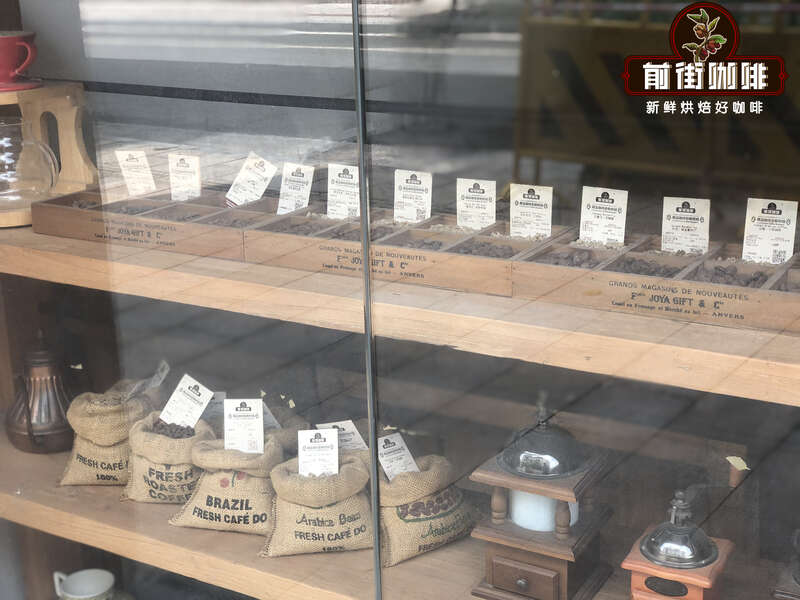
Let's first take a look at Starbucks' handmade coffee filter cup, Melitta.
Mrs. Melita, a very famous figure in the history of coffee, has influenced the coffee industry for more than 100 years with her invention. Melita, whose full name is Bentz Melitta, was born in Dresden, Germany in 1873. The lady likes freshly brewed coffee very much, but at the same time hates the feeling of coffee grounds remaining in her mouth when drinking coffee. On a whim, Mrs. Melita prepared a copper bowl while making coffee and made a small hole at the bottom of the bowl. Then he took out an ink-absorbing paper from his child's schoolbag and put it on it. Pour into the hot water, the coffee drips through the blotting paper into the pot under the copper bowl, and the aroma of the coffee overflows. Such an invention helps retain the mellow flavor of coffee while filtering out discarded coffee grounds. It is this operation that creates a trickle extraction method. Before this invention, Germans would use filter cloth to filter coffee grounds, but on the one hand, it is difficult to clean the filter cloth, on the other hand, repeated use of the filter cloth will cause hygiene problems, and the residue left in the filter cloth also affects the extraction of secondary flavor. On June 20, 1908, Melita registered her invention with the Royal Patent Office: a copper coffee filter cup with a water outlet at the bottom, the world's first follicular coffee cup.
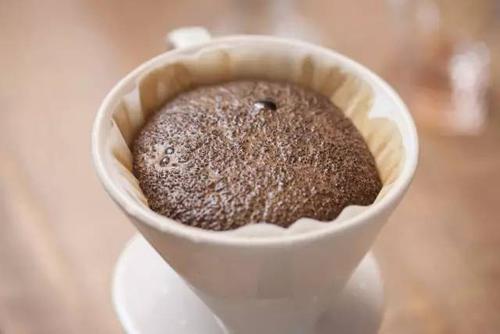
Extraction features: Merita trapezoidal filter cup design shows a wide and narrow shape from the side, showing a circle at the top, this design is conducive to the concentration of water, but also allows coffee particles to be evenly distributed, reducing stacking conditions, more ribs on the cup wall, showing a linear distribution, the distance between the ribs is consistent, the aim is to increase the speed of exhaust and flow. At the same time, its flow rate is relatively slow, and it is mainly extracted by soaking, which can show a better alcohol thickness. Starbucks coffee beans are generally roasted moderately deep, so the use of Merita filter cup can better reflect the mellow taste of Starbucks coffee beans.
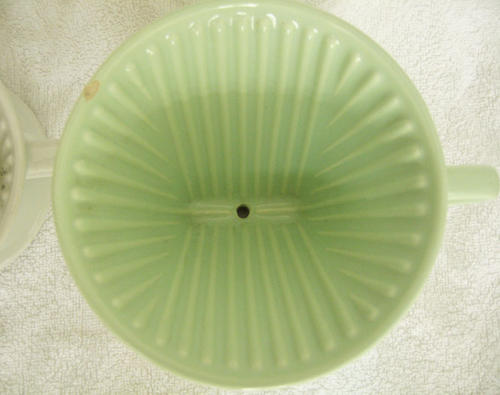
Next, let's talk about Starbucks' central water injection method in front of the street.
The method of central water injection is-after steaming, the second time of water injection, first from the inside to the outside ring, draw a circle to inject water, fully wet all the coffee powder with hot water, and then return to the central point, the whole process fixed point for water injection. In this way, the coffee powder can tumble regularly in the filter cup. The advantage is that the coffee is extracted more evenly, while the disadvantage is that the extracted coffee has a low alcohol thickness. Many friends mentioned that there is a good chance that the central water injection method will not be able to extract completely. Qianjie feels that central water injection can be extracted completely. Why do you say so?
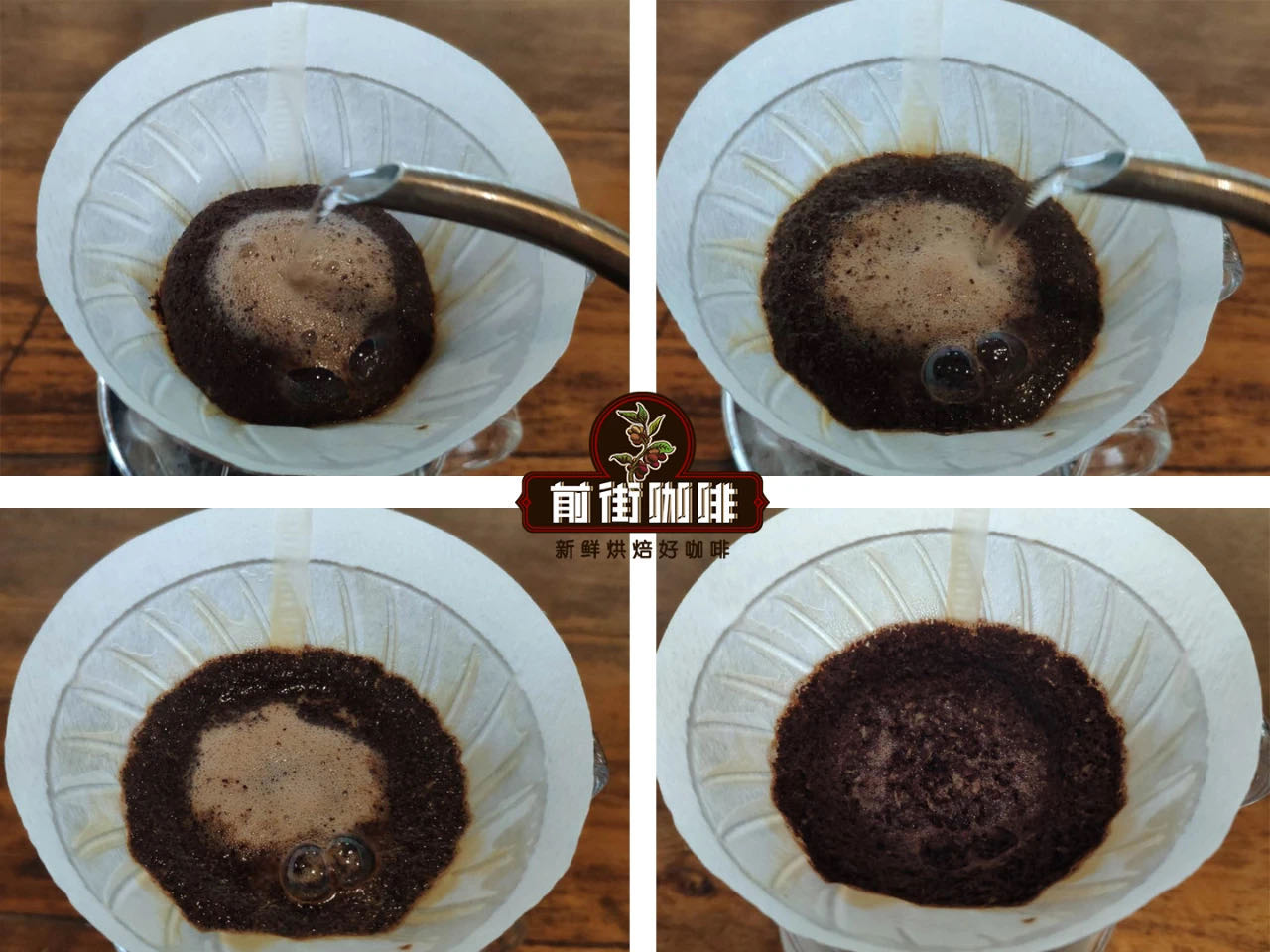
1. The coffee powder in the filter cup is actually honeycomb, and the water can pass through the coffee powder because of the honeycomb gap, thus extracting the water-soluble substance from the coffee.
2. The taste of soaking depends on the soaking time.
The taste of coffee depends on the soaking process of coffee powder in water, that is, the coffee powder is fully soaked and the taste is strong, but if the soaking is not enough, the taste is relatively light, so the water storage capacity of the brewing tool is an important factor. Flannel has a stronger water storage capacity than filter paper, so the flavor of flannel is stronger than filter paper extraction.
3. The water injected from the middle flows through the most coffee powder, and it is also the most complete brewing.
Qianjie tip: if you choose the central water injection method, you should pay attention to the speed of water flow, as well as the time of water injection. The water flow should not be too thick or fast or slow, so as to avoid the sharp acid and the defective smell of green vegetables caused by uneven extraction and insufficient extraction. If the time is too short, it is not easy to fully extract the coffee.
Then let's talk about the filter cup used in Qianjie coffee brewing medium-deep coffee beans-- KONO.
KONO is a famous Japanese company that makes coffee utensils. Since the invention of the siphon pot in 1925, KONO has been focusing on the roasting of coffee beans and the research and production of coffee utensils. The maker is a Japanese named Toshio Kono, and the filter cup is named after him.
Observe carefully that the ribs of the KONO do not extend from the bottom to the top, but stop at less than half the height of the filter cup.
This height is designed to ensure that in the process of dripping, the filter paper can be attached to the wall of the filter cup after absorbing water, and once the exhaust space is limited, the air flow will also be limited, which will increase the water absorption time of coffee powder particles. so that the extracted coffee as a whole is more balanced, less prone to inadequate extraction.
The convex groove frame at the bottom of the KONO filter cup is designed to produce a siphon effect in subsequent cooking. It is said that it took President Kono more than 10 years to determine the depth and length of the ribs.
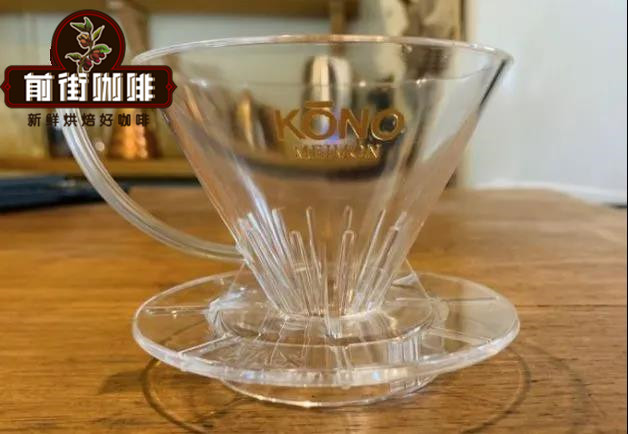
Extraction characteristics: in the process of brewing, when the water level submerged the ribs, the filter paper adhered closely to the cup wall because there was no diversion groove above, so that the air could only flow downwards after being blocked, so that a relatively vacuum space was formed between the water and coffee particles, and the coffee powder was soaked, while a section under the filter cup extended to the outlet with a section of ribs.
Such a design creates a downward gravitational action that flows out when the air flow above has been blocked, creating an airtight space below, creating a more powerful downward pulling force.
The flavor extracted from the taste will be more concentrated, and the opening at the bottom of the filter cup will be relatively small, so that the extraction force will be more concentrated, and the water flow can give the coffee powder more soaking time, making the coffee alcohol thicker and the flavor very full. it has a typical Japanese hand flavor.
Why does Qianjie use sectional method to cook in circles? What's so special about it?
The overall time of Qianjie coffee three-stage water injection is controlled at about 2 minutes, which is divided into steaming, the second water injection and the third water injection. The segmented extraction method of three-stage water injection can clarify the flavor of the front, middle and back of the coffee and ensure the flavor of the coffee.
Brewing coffee is actually the process of extracting molecules from coffee cells, and this process includes the following three steps: wetting, dissolution, and release, which occur one after another and interact with each other, and finally produce the flavor of coffee.
[wet]
Literally, coffee powder is wetted when it touches water, which is the starting point from which coffee cells begin to release molecules, which is what Qianjie often says about the steaming process.
Roasted coffee beans are filled with carbon dioxide, and the fresher the beans, the more carbon dioxide they contain. When the hot water touches the coffee powder, the carbon dioxide will be released first, forming a layer of air bubbles on the surface, and the coffee powder in the filter cup will begin to expand when the hand is flushed. Therefore, after wetting the coffee powder, we will stop injecting water and wait for the complete release of carbon dioxide and the coffee powder to stop expanding and then continue to heat the water in order to achieve a better extraction effect.
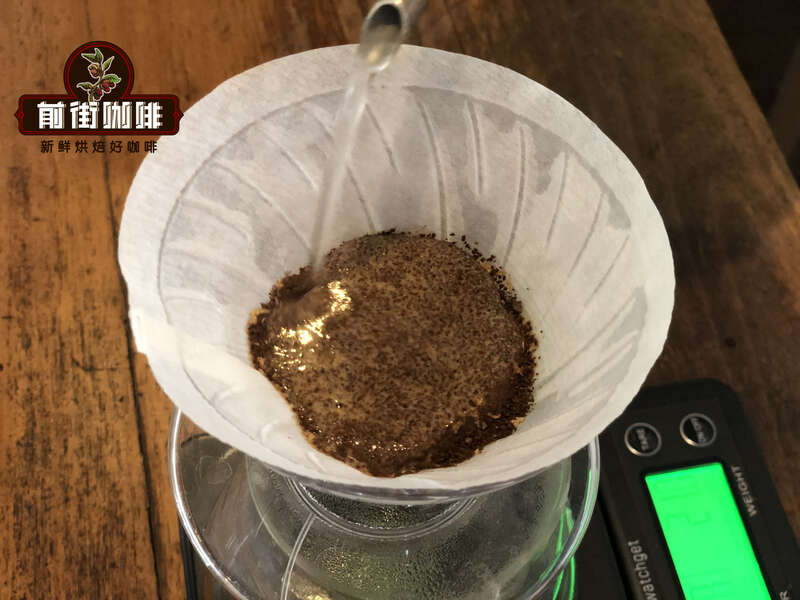
[dissolve]
Dissolution refers to the process of dissolving soluble molecules in coffee cells in hot water, which is the most important step in deciding to extract the flavor of coffee, which is often said in front of the street.
A coffee bean is made up of 70% insoluble cellulose and another 30% is soluble odor molecules that are dissolved in order according to the size of the molecules when they come into contact with water. The first small molecular substances to be dissolved include acid and aroma, such as flower aroma, citrus acid, etc., then middle molecular sweetness, such as sweet juice, honey, brown sugar, etc., and finally the bitter taste of macromolecules. This is how coffee tastes at different levels. Therefore, if you like the sweeter taste, the extraction time should be shorter, because the longer the hot water stays on the coffee powder, the more bitter molecules will be dissolved.
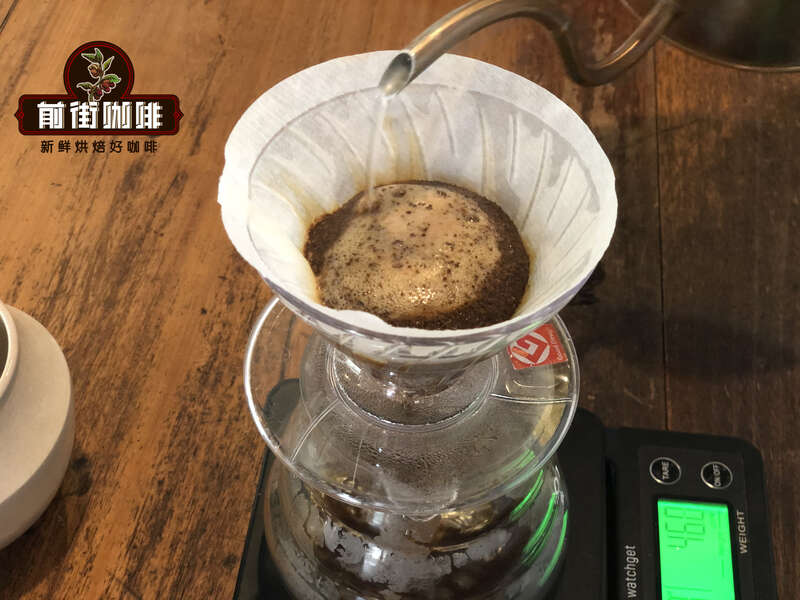
[diffusion]
After the odor molecules dissolve, they leave the coffee cells by osmosis, a process called diffusion. After the odor molecules are diffused into hot water, the final coffee extract is formed. It is also mentioned in the front street above that the extraction of a cup of coffee is to first extract the acid, then to the sweet, and finally to the bitter taste, so after a cup of coffee is extracted, it must be shaken a few times so that the coffee liquid can be evenly mixed, so that the most complete coffee flavor can be tasted.
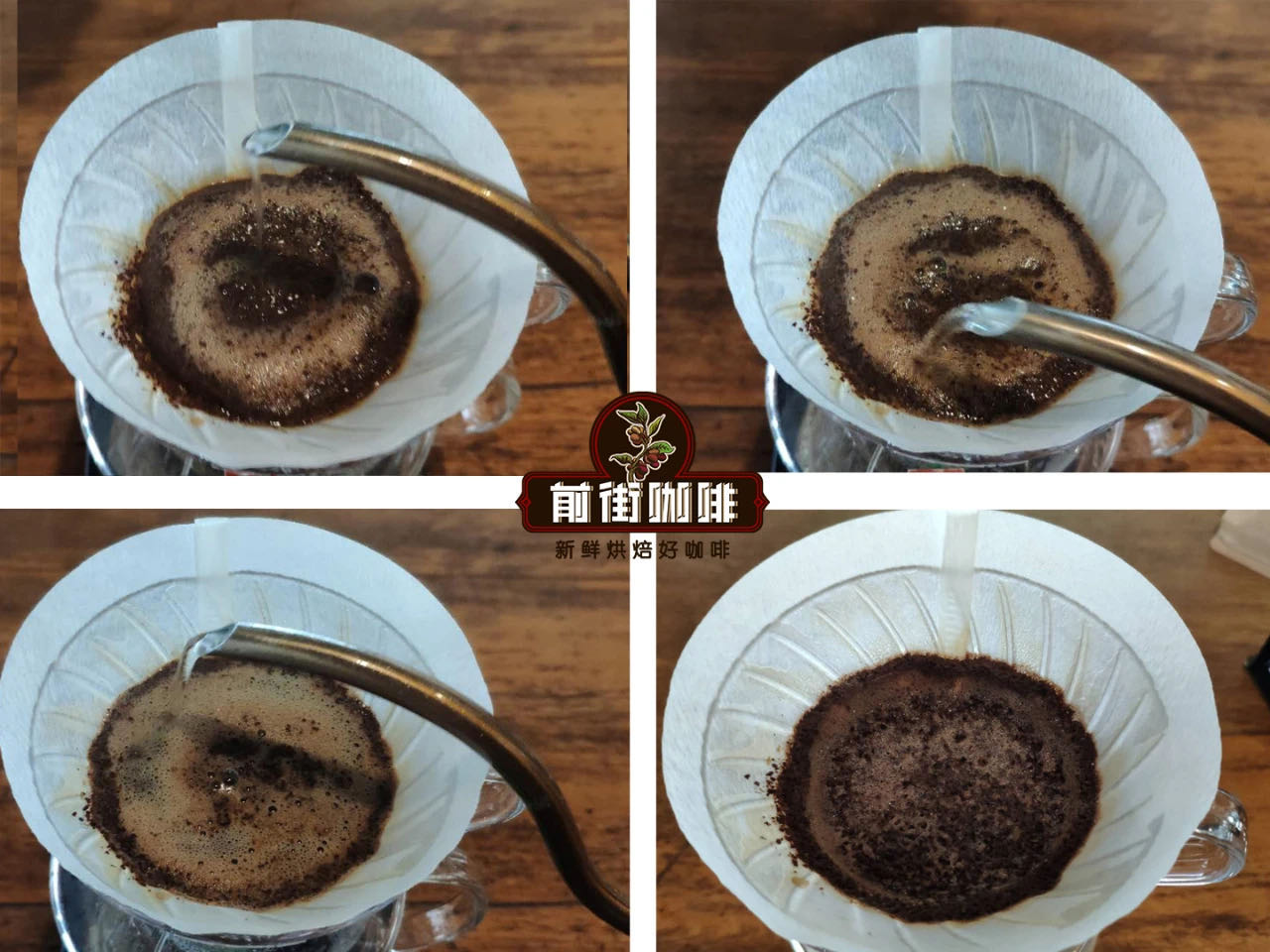
After that, some friends may ask, what's the difference between hand-brewed coffee and cold-extracted coffee?
Our common hand-brewed coffee is a high-temperature extraction process. High-temperature extraction will quickly decompose the tannic acid in the coffee into pyrosylic acid, resulting in sour, sweet and bitter, which is often said in the front street to release the flavor of coffee.
High-temperature water extraction of coffee can easily lead to the complete release of coffee flavor, and then begin to release the taste of coffee bean wood fiber, which is what we often call miscellaneous flavor, wood taste and other unpleasant taste.
Cold extraction coffee and ice drop coffee is a low temperature extraction process. Low temperature extraction is that coffee powder is exposed to water at low temperature for a long time, only flavor substances with smaller molecules, such as flower and fruit, are extracted, while flavor substances with larger molecules, such as smoking and roasting, are difficult to be extracted. therefore, cold-extracted coffee / ice drop coffee can drink the flavor of coffee beans, smooth taste, hierarchical and sweet obvious.
For more boutique coffee beans, please add private Qianjie coffee on Wechat. WeChat account: kaixinguoguo0925
Important Notice :
前街咖啡 FrontStreet Coffee has moved to new addredd:
FrontStreet Coffee Address: 315,Donghua East Road,GuangZhou
Tel:020 38364473
- Prev
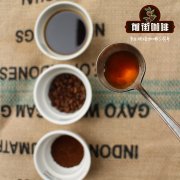
The difference between hand-brewed coffee and Starbucks coffee grinding degree of Starbucks coffee powder
Professional coffee knowledge exchange more coffee bean information please follow the coffee workshop (Wechat official account cafe_style) below I will from the raw materials, the production process of two parts, hand coffee and Starbucks to make a detailed comparison. Just like roast duck, the most important thing is duck, Saute Spicy Chicken, the most important thing is chicken, the most important thing to make coffee is beans. Coffee is really a simple drink, there are only two in total
- Next
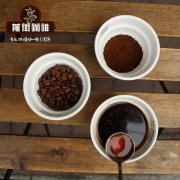
What are the kinds of Starbucks hand-made coffee beans? which ones taste good?
Professional coffee knowledge exchange more coffee bean information Please follow the coffee workshop (Wechat official account cafe_style) wake up on Sunday morning, very excited to take out the new toy ── hand filter cup and filter paper, boil the level to play hand coffee. This time it is used in costco.
Related
- What documents do you need to go through to open a coffee shop? coffee shop coffee shop certificate processing process
- How to purchase Coffee beans in small Cafe how to choose a suitable supplier for domestic Coffee supply Company
- How to drink Starbucks Fragrance White Coffee? how to make Australian White Coffee? what Italian coffee beans are recommended?
- The Story of Flora Coffee: the name of Flora Coffee Bean and the implication of the Flowers on Florna Coffee
- How much does a cup of coffee cost? How much is the profit of a cup of coffee? What is the profit of the coffee shop in a year?
- Yunnan small Coffee, known as "fragrant Coffee", introduces the characteristics of Alpine Arabica Coffee producing areas in Yunnan, China
- 2023 latest Starbucks full menu price list how much is a cup of Starbucks coffee what is better to drink the most popular hot and cold drinks recommended
- Starbucks different kinds of Coffee Price list Starbucks menu 2023 Top Ten Best drinks in Starbucks
- Starbucks Spring praise Comprehensive matching Coffee Bean theme Story Packaging implication and taste description
- The cost of a cup of coffee latte American coffee cost price and selling price

